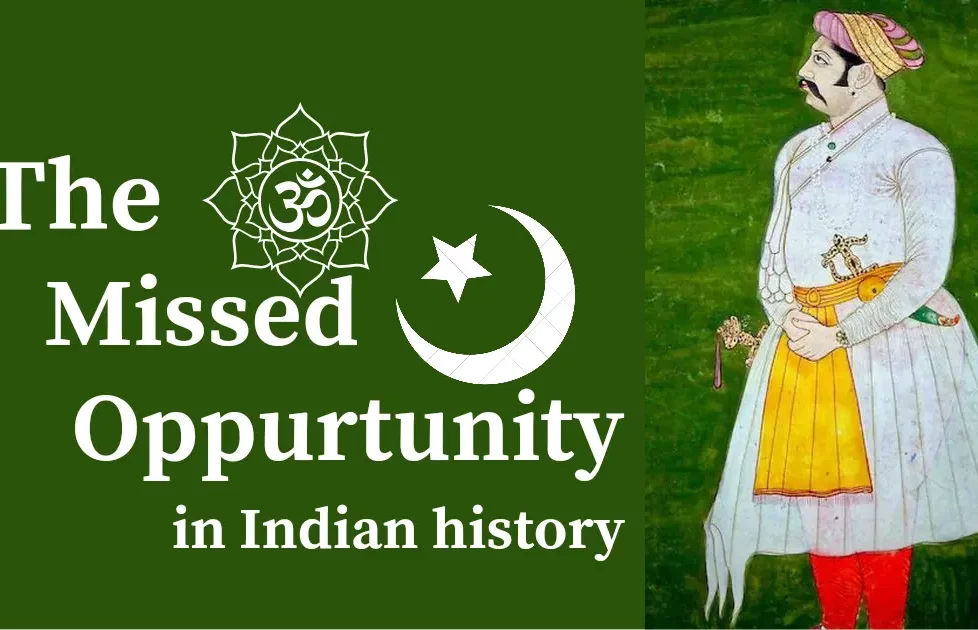Missed Opportunity: How an Alliance Between Maldev and Humayun Could Have Ended Afghan Rule in India


In the annals of history, pivotal moments arise where the destiny of nations and empires hangs in the balance. One such moment presented itself in 1543 AD when two influential rulers of India, Rao Maldev of Marwar and Humayun, the Mughal Emperor, had an opportunity to unite against the formidable Sher Shah Suri and potentially end Afghan rule in the subcontinent. This article delves into the historical context, military prowess, diplomatic intricacies, and the implications of what could have been a game-changing alliance between the Rajputs and Mughals.
The 16th century was a turbulent period in India’s history, characterized by the rise of powerful regional rulers vying for supremacy. Sher Shah Suri, a brilliant military strategist, had overthrown the Mughal Empire and established the Sur dynasty. Humayun, the rightful Mughal Emperor, faced significant setbacks and was driven out of India, seeking refuge in various regions. Similarly, Rao Maldev, ruler of the Marwar region, faced threats from Sher Shah’s expansionist policies and was in a position to seek alliances to protect his kingdom and influence.
Sher Shah Suri’s ascendancy marked a significant turning point in Indian history. He implemented administrative reforms, introduced the Grand Trunk Road (absolutely for his own greed to transport that Indian wealth which he looted from many Hindu temples of India), reorganized the revenue system, and improved infrastructure. These measures bolstered his control over northern India, posing a formidable challenge to regional rulers, including Humayun and Rao Maldev.
Rao Maldev, born on 5th December 1511 AD, was a distinguished ruler known for his military acumen and imperial ambitions. He hailed from the Rathore clan of Rajputs, renowned for their valor and chivalry. Ascending to the throne after the demise of his father, Rao Ganga, Maldev embarked on a mission to expand Marwar’s territory through 52 wars, capturing 58 parganas.
His conquests included Ajmer, Phalodi, Nagaur, Bilara, Dungar Singh, Bhadrajuna, Raipur, Jalore, and others. Despite facing significant military challenges, Rao Maldev’s strategic prowess and diplomacy solidified his position as one of the most powerful rulers in Hindustan.
Humayun, the second Mughal Emperor, faced a series of military defeats at the hands of Sher Shah Suri. He was forced to leave India and seek refuge in Persia, where he formed alliances and regrouped his forces. After regaining the throne with Persian assistance, Humayun returned to India, reclaiming territories and reestablishing Mughal rule.
At a critical juncture, Humayun found himself in Rajasthan, a region where Rao Maldev held sway. Both rulers had mutual interests in countering Sher Shah Suri’s dominance, and an alliance between them could have been a turning point in Indian history. However, distrust and conflicting ambitions hindered their collaboration.
Humayun sent three messengers to Rao Maldev for help from a place called Jogi Tirtha, near Marwar. The messengers included Mir Samand, Raimal Soni, and Atka Khan. Rao Maldev promised to give Bikaner and military aid, but Humayun’s chief librarian, Mulla Surkh, advised him to move towards Sindh (Pakistan) instead. Despite Rao Maldev’s assurances, Humayun chose to seek refuge in Sindh and eventually found sanctuary with Virasal Sodha, the king of Amarkot.
The potential impact of an alliance between Rao Maldev and Humayun is far-reaching:
a. Strengthening Military Power: An alliance of Rajputs and Mughals would have created a formidable military force, capable of challenging Sher Shah’s dominion.
b. Geographic Advantage: Rao Maldev’s strategic location in Marwar and Humayun’s Mughal territories could have facilitated better coordination in military campaigns.
c. Diplomatic Clout: A unified Rajput-Mughal front could have garnered support from other regional rulers and dissatisfied elements within Sher Shah’s empire, potentially leading to more defections.
d. Symbolic Significance: An alliance between the Rajputs and Mughals, two historically esteemed warrior groups, would have demonstrated unity and resistance against Afghan rule.
e. Socio-Cultural Impact: The alliance might have paved the way for a broader cultural exchange and assimilation between Rajputs and Mughals, fostering greater harmony in the subcontinent.
The missed opportunity for an alliance between Rao Maldev and Humayun remains a poignant “what-if” moment in Indian history. While they were unable to come together and challenge Sher Shah Suri’s rule, their individual legacies continue to hold significant places in India’s rich historical tapestry. Rao Maldev’s military achievements, strategic acumen, and patronage of arts and literature have made him a revered figure in Rajasthan’s history. Likewise, Humayun’s tenacity and perseverance paved the way for the restoration of the Mughal Empire under his son Akbar.
As we reflect on this historical juncture, we are reminded of the delicate balance of power and the enduring impact of individual choices on the destiny of nations and empires. Rao Maldev and Humayun’s missed alliance serves as a testament to the complexities of history and the profound implications of decisions made or unmade. The path not taken remains an intriguing chapter in India’s past, igniting our curiosity and inspiring us to explore the multitude of possibilities that history offers.
DISCLAIMER: The author is solely responsible for the views expressed in this article. The author carries the responsibility for citing and/or licensing of images utilized within the text.
